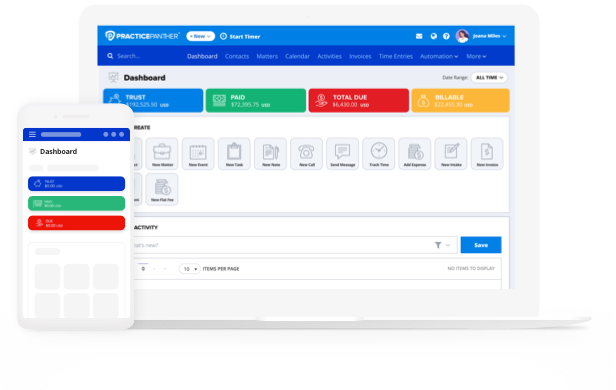Though it’s 2023, the legal industry is still navigating the long-term effects of the pandemic and its lasting impact on how firms manage their business. In the face of new challenges, it’s crucial to stay current on legal technology trends to maintain a competitive edge.
Find out all the trends in legal technology and law practice management software that you need to know for 2023, based on research from lawyers, legal professionals, and consultants.
Need for Efficiency
The challenges of the pandemic forced many traditional industries to innovate quickly, but perhaps none as notably as the legal industry. As lawyers find new ways to manage their increasing workload, there’s a growing trend across law firms to leverage different types of arrangements to get everything done.
In 2023, 81% of law firms will increase the use of third-party or outsourced resources. This includes contract workers and third-party resources, alternative legal service providers (ALSPs), and non-legal staff. These resources are crucial for addressing the talent shortage that emerged from the pandemic, which leaves law firms without the necessary staff to tackle the increased workload.

Artificial Intelligence on the Rise
Digital transformation continues to sweep across the legal industry. Automation is one of the key ways legal professionals are using technology for processes like legal document management, legal research, transcription, analysis, and billing. Though only 10% of current firms are using AI tools, it’s significantly growing.
As businesses strive to reduce costs and increase efficiency, AI is a useful tool to complete repetitive tasks, including document review, legal document drafting, and legal research. 36% of lawyers say that AI tools will be mainstream within the next five years.
Automation, Everywhere
Though in-house legal departments and law firms have been wary of automation in the past, the pandemic forced more adoption to automate legal activities and streamline efficiency.
The corporate world is no stranger to automation, but in-house legal departments have been slow to adopt. But with the industry challenges, both in-house legal departments and law firms are seeing the value of automation technology.
By 2024, legal departments will have automated 50% of legal work related to major corporate transactions. As the legal industry realizes the benefits of allowing technology to handle repetitive tasks, human staff are better able to manage their own demanding workloads.

Increased Legal Technology Adoption
The pandemic increased the workload for law firms, yet staffing has held steady. Like other industries, the shortage of talent in the face of increased market demand posed unique challenges for law firm efficiency and productivity.
Technology is a viable solution to address these demands and streamline workflows. By 2025, legal departments will increase their spend on legal technology threefold. Along with this, legal departments expect the total number of in-house full-time employees to stay the same — or even decrease — making technology a crucial step in maintaining efficiency.
Growing Legal Operations Departments
Legal operations is a growing field, but these teams often lack the tools they need to efficiently perform their job functions and deliver value to legal departments. It’s never been more important for legal operations teams to adopt modern processes and technology if they want to support firms in being competitive in the legal market.
As a result, technology implementation and budget management are the top two areas of focus for legal operations professionals at law firms. With these tools, the legal department can focus on legal services instead of time-consuming administrative work, offering better insights for the organization.
Stay on Trend with PracticePanther
PracticePanther’s all-in-one law practice management software scales with your law firm while also offering industry-leading features that keep your operations modern. With PracticePanther’s law firm software, firms have access to powerful automated solutions like workflows, client intake forms, billing, document management, and more. Firms can easily streamline their processes to meet client demands and stay ahead of industry trends.





